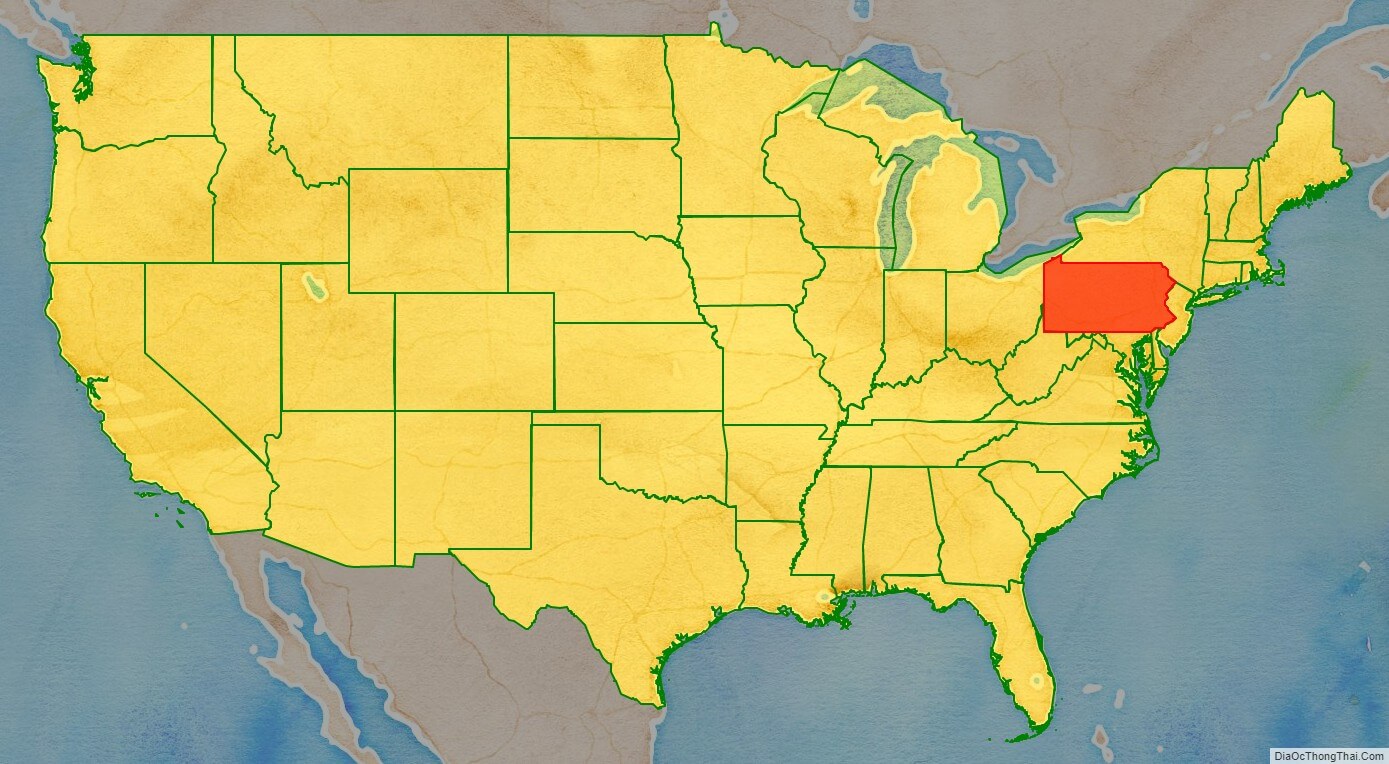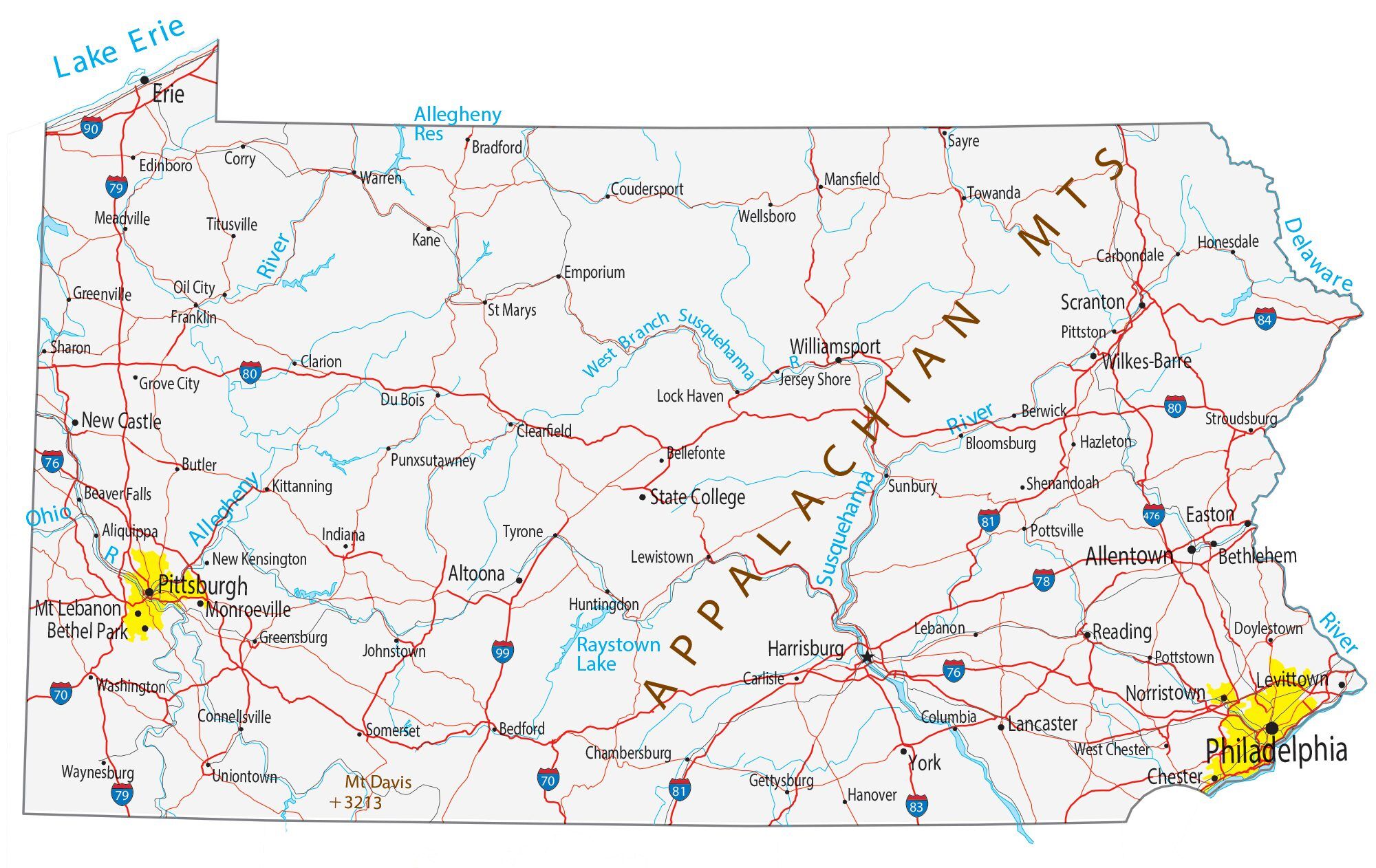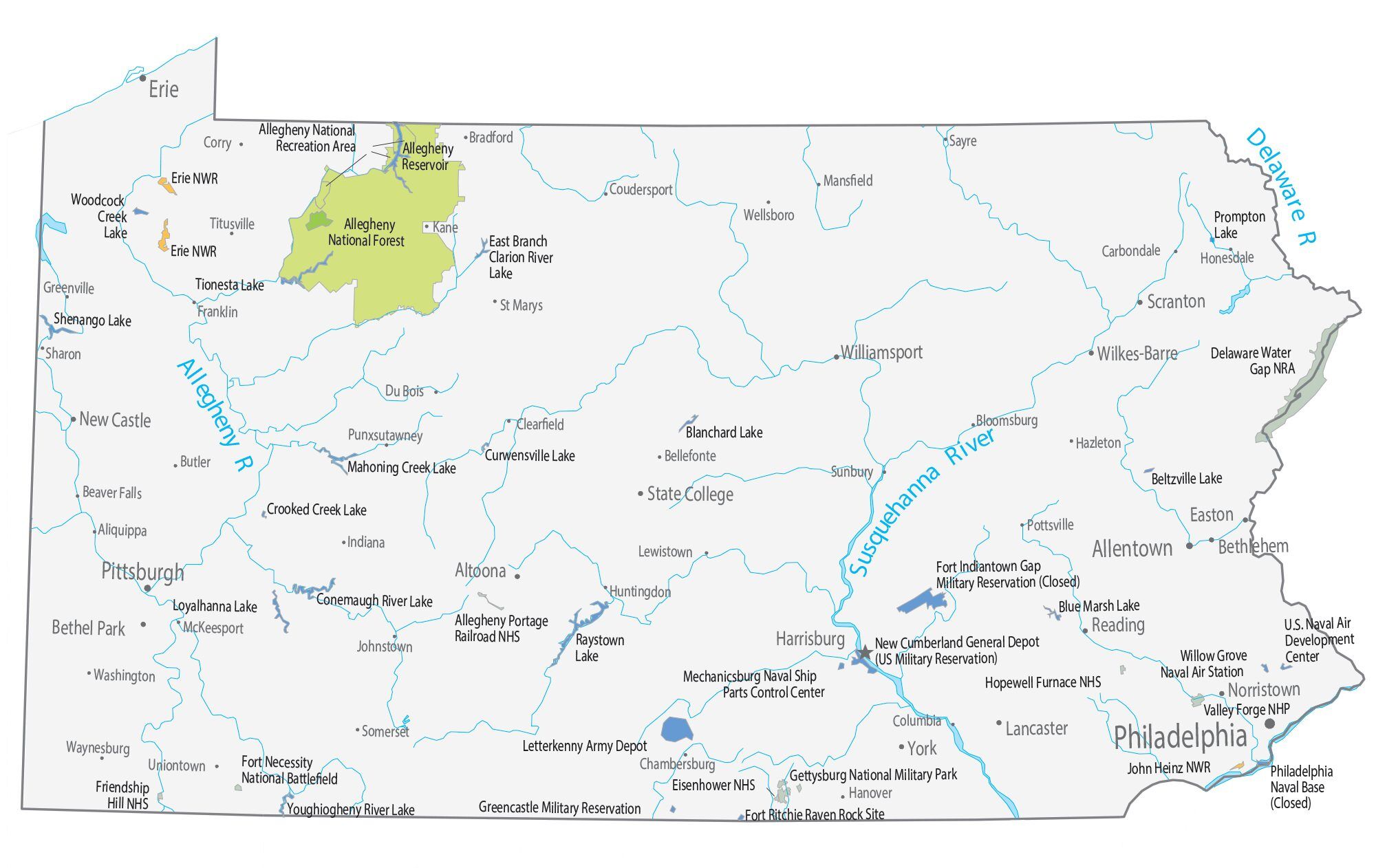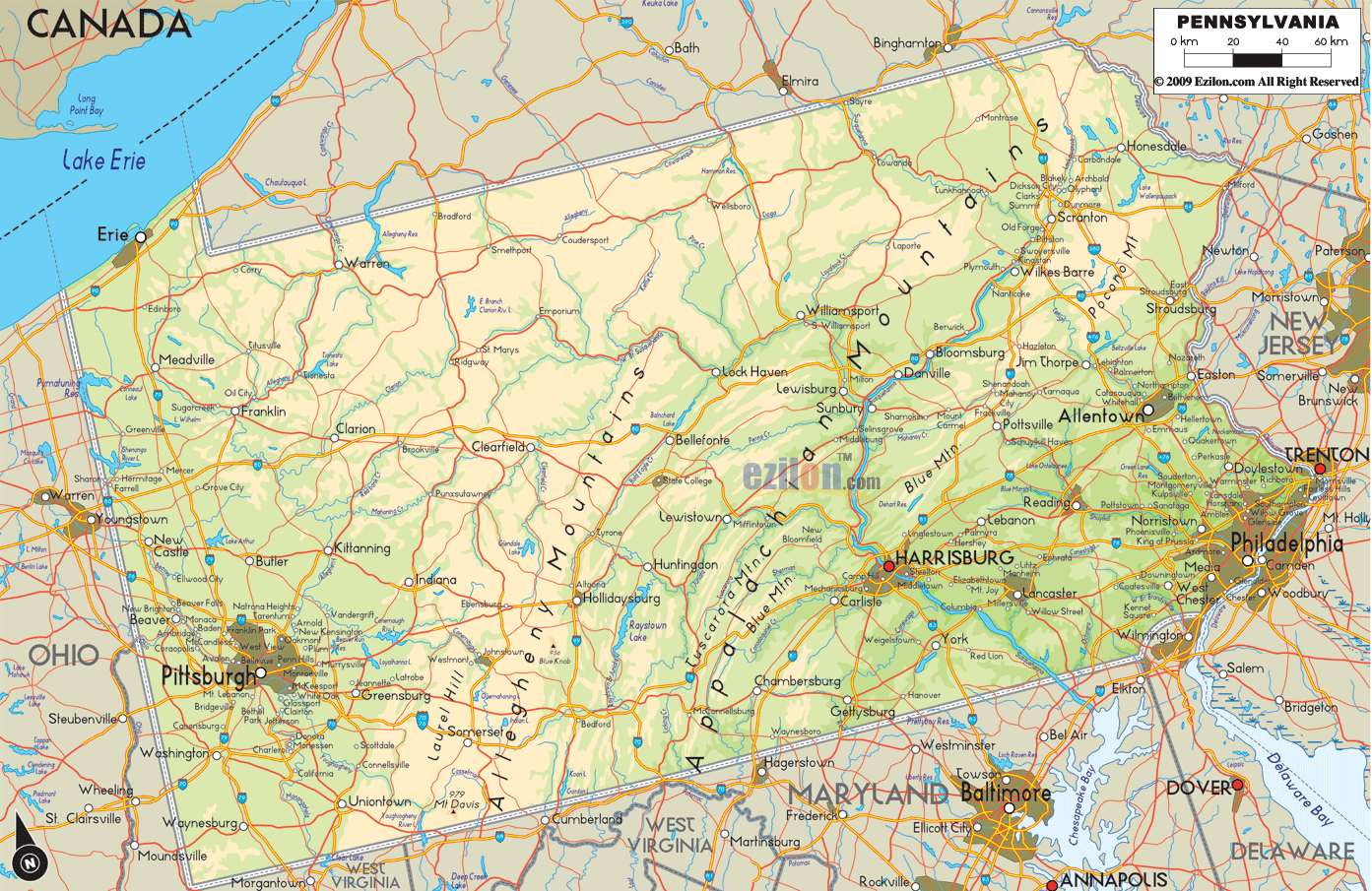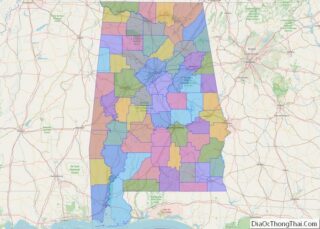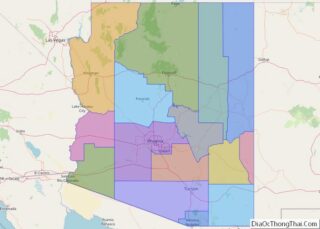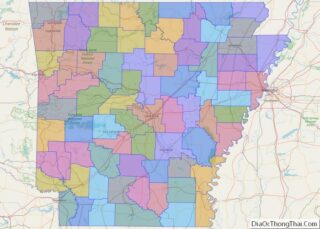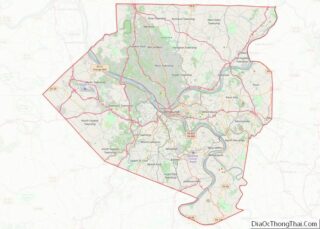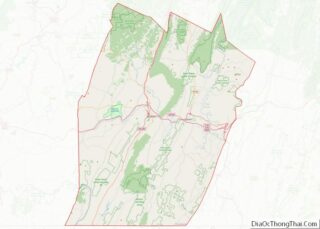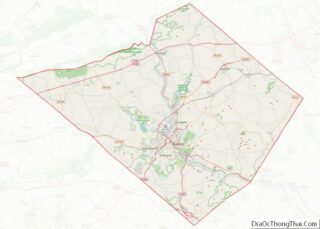Pennsylvania (/ˌpɛnsɪlˈveɪniə/ (listen); Pennsylvania German: Pennsilfaani), officially the Commonwealth of Pennsylvania, is a state spanning the Mid-Atlantic, Northeastern, Appalachian, and Great Lakes regions of the United States. Pennsylvania borders Delaware to its southeast, Maryland to its south, West Virginia to its southwest, Ohio to its west, Lake Erie and the Canadian province of Ontario to its northwest, New York state to its north, and the Delaware River and New Jersey to its east.
Pennsylvania is the fifth-most populous state in the nation with over 13 million residents as of 2020, its highest decennial count ever. The state is the 33rd-largest by area and ranks ninth among all states in population density. The southeastern Delaware Valley metropolitan area comprises and surrounds Philadelphia, the state’s largest and nation’s sixth-most populous city. Another 2.37 million reside in Greater Pittsburgh in the southwest, centered in and around Pittsburgh, the state’s second-largest and Western Pennsylvania’s largest city. The state’s subsequent five most populous cities are: Allentown, Reading, Erie, Scranton, and Bethlehem. The state capital is Harrisburg.
Pennsylvania’s geography is highly diverse: the Appalachian Mountains run through the center of the state; the Allegheny and Pocono mountains span much of Northeastern Pennsylvania; close to 60% of the state is forested. While it has only 140 miles (225 km) of waterfront along Lake Erie and the Delaware River, Pennsylvania has more navigable rivers than any other state in the nation, including the Delaware, Ohio, and Pine Creek rivers.
Pennsylvania was founded in 1681 through a royal land grant to William Penn, son of the state’s namesake; a southeast portion of the state was once part of the colony of New Sweden. Established as a haven for religious and political tolerance, the Province of Pennsylvania was known for its relatively peaceful relations with native tribes, innovative government system, and religious pluralism. Pennsylvania was one of thirteen British colonies from which the nation was formed.
Pennsylvania played a vital and historic role in the American Revolution and the ultimately successful quest for independence from the British Empire. Its largest city, Philadelphia, was the gathering place of the nation’s Founding Fathers and home to much of the thinking, activism, and writing that inspired the American Revolution. Philadelphia hosted the First Continental Congress in Carpenters’ Hall in 1774, and, beginning the following year, the Second Continental Congress in Independence Hall, which in 1776 unanimously adopted the Declaration of Independence, a document that historian Joseph Ellis has described as “the most potent and consequential words in American history” and which formally launched the American Revolutionary War.
On December 25 and 26, 1776, Washington secretly led a column of Continental Army troops across the Delaware River from Bucks County, launching a successful surprise attack against Hessian mercenaries at the Battle of Trenton. In 1777 and 1778, the national capital of Philadelphia fell under British control for nine months, and multiple Revolutionary War battles were fought in Pennsylvania. For six months, Washington and 12,000 Continental Army troops encamped at Valley Forge over a harsh winter with limited supplies; roughly 1,700 to 2,000 of them died at Valley Forge from disease and malnutrition.
In Philadelphia, the Second Continental Congress, on June 21, 1778, ratified the Articles of Confederation, which served as the foundation for the ultimate development and ratification of the U.S. Constitution. On December 12, 1787, Pennsylvania became the second state after Delaware, which had previously been part of Pennsylvania as the three lower counties, to ratify the Constitution. On eight separate occasions prior to the construction of Washington, D.C. as the nation’s capital, a Pennsylvania city served as the nation’s capital. Philadelphia served as the nation’s capital on six separate occasions, including from 1775 to 1776, in 1777, twice in 1778, in 1781, and from 1790 to 1800; York and Lancaster both briefly served as the nation’s capital in 1777.
During the American Civil War, Pennsylvania’s 360,000 Union Army volunteers proved influential in strengthening the Union, successfully guarding the national capital of Washington, D.C., which was vulnerable following the fall of Fort Sumter, and later leading daring raids against Confederate Army strongholds in the Deep South. The bloodiest battle of the Civil War with over 50,000 casualties, and one of the Union Army’s most important victories, was fought on Pennsylvania soil at Gettysburg over three days in July 1863. The Union Army’s victory at Gettysburg is considered the turning point in the war, leading to the Union’s preservation. President Abraham Lincoln’s 271-word address dedicating Gettysburg National Cemetery on November 19, 1863, remains one of the best-known speeches in American history.
In the late 19th and 20th centuries, Pittsburgh-based U.S. Steel, Bethlehem-based Bethlehem Steel, and other Pennsylvania manufacturing companies inspired the American Industrial Revolution and contributed to the development of much of the nation’s early infrastructure, including key bridges, skyscrapers, and warships, tanks, and other military hardware used in U.S.-led victories in World War I, World War II, and the Cold War. Since Pennsylvania’s 1787 founding, a number of influential Pennsylvanians have contributed significantly to the nation in many fields, including the military, politics, business, scientific innovation, thought leadership, philanthropy, music, art, and sports.
| Before statehood: | Province of Pennsylvania |
|---|---|
| Admitted to the Union: | December 12, 1787 (2nd) |
| Capital: | Harrisburg |
| Largest city: | Philadelphia |
| Largest metro and urban areas: | Delaware Valley |
| Elevation: | 1,100 ft (340 m) |
| Total Area: | 46,055 sq mi (119,283 km) |
| Area Rank: | 33rd |
| Total Population: | 13,011,844 |
| Population Rank: | 5th |
| Population Density: | 290/sq mi (112/km) |
| Population Density Rank: | 9th |
| Median Household Income: | $59,195 |
| Income Rank: | 23rd |
| Demonym(s): | Pennsylvanian Pennsylvanier (Pennsylvania Dutch) |
| USPS abbreviation: | PA |
| ISO 3166 code: | US-PA |
| Website: | www.pa.gov |
Online Interactive Map
Click on ![]() to view map in "full screen" mode.
to view map in "full screen" mode.
Pennsylvania location map. Where is Pennsylvania state?
Pennsylvania Road Map
Pennsylvania Map – Roads & Cities
Pennsylvania Street Map
Pennsylvania State Map – Places and Landmarks
Pennsylvania Political Map

Pennsylvania Lakes and Rivers Map
Geography
Pennsylvania is 170 miles (274 km) north to south and 283 miles (455 km) east to west. Of a total 46,055 square miles (119,282 km), 44,817 square miles (116,075 km) are land, 490 square miles (1,269 km) are inland waters, and 749 square miles (1,940 km) are waters in Lake Erie. It is the 33rd-largest state in the United States. Pennsylvania has 51 miles (82 km) of coastline along Lake Erie and 57 miles (92 km) of shoreline along the Delaware Estuary. Of the original Thirteen Colonies, Pennsylvania is the only state that does not border the Atlantic Ocean.
The boundaries of the state are the Mason–Dixon line (39°43′ N) to the south, Twelve-Mile Circle on the Pennsylvania-Delaware border, the Delaware River to the east, 80°31′ W to the west, and the 42° N to the north, except for a short segment on the western end where a triangle extends north to Lake Erie. The state has five geographical regions: Allegheny Plateau, Ridge and Valley, Atlantic Coastal Plain, Piedmont, and Erie Plain.
Climate
Pennsylvania’s diverse topography produces a variety of climates, though the entire state experiences cold winters and humid summers. Straddling two major zones, the majority of the state, except for the southeastern corner, has a humid continental climate (Köppen climate classification Dfb). The southern portion of the state has a humid subtropical climate. The largest city, Philadelphia, has a humid subtropical climate (Köppen Cfa).
Summers are generally hot and humid. Moving toward the mountainous interior of the state, the winter climate becomes colder, the number of cloudy days increases, and snowfall amounts are greater. Western areas of the state, particularly locations near Lake Erie, can receive over 100 inches (250 cm) of snowfall annually, and the entire state receives plentiful precipitation throughout the year. The state may be subject to severe weather from spring through summer into autumn. Tornadoes occur annually in the state, sometimes in large numbers, such as 30 recorded tornadoes in 2011; generally speaking, these tornadoes do not cause significant damage.
Municipalities
Cities in Pennsylvania include Philadelphia, Reading, Lebanon and Lancaster in the southeast, Pittsburgh in the southwest, and the tri-cities of Allentown, Bethlehem, and Easton in the central east, known as the Lehigh Valley. The northeast includes the former anthracite coal mining cities of Scranton, Wilkes-Barre, Pittston, Nanticoke, and Hazleton. Erie is located in the northwest. State College is located in the central region. Williamsport is in the north-central region with York, Carlisle, and the state capital Harrisburg on the Susquehanna River in the east-central region of the state. Altoona and Johnstown are in the state’s west-central region.
The state’s three most populated cities, in order of size, are Philadelphia, Pittsburgh, and Allentown.
Adjacent states and province
- Ontario (Province of Canada) (Northwest)
- New York (North and Northeast)
- New Jersey (East and Southeast)
- Delaware (Extreme Southeast)
- Maryland (South)
- West Virginia (Southwest)
- Ohio (West)
Pennsylvania Physical Map
Pennsylvania Topographic Map
Pennsylvania Satellite Map
Others printable maps
Pennsylvania Outline Map
Blank Pennsylvania County Map
See also
Map of Pennsylvania State and its subdivision:- Adams
- Allegheny
- Armstrong
- Beaver
- Bedford
- Berks
- Blair
- Bradford
- Bucks
- Butler
- Cambria
- Cameron
- Carbon
- Centre
- Chester
- Clarion
- Clearfield
- Clinton
- Columbia
- Crawford
- Cumberland
- Dauphin
- Delaware
- Elk
- Erie
- Fayette
- Forest
- Franklin
- Fulton
- Greene
- Huntingdon
- Indiana
- Jefferson
- Juniata
- Lackawanna
- Lancaster
- Lawrence
- Lebanon
- Lehigh
- Luzerne
- Lycoming
- Mc Kean
- Mercer
- Mifflin
- Monroe
- Montgomery
- Montour
- Northampton
- Northumberland
- Perry
- Philadelphia
- Pike
- Potter
- Schuylkill
- Snyder
- Somerset
- Sullivan
- Susquehanna
- Tioga
- Union
- Venango
- Warren
- Washington
- Wayne
- Westmoreland
- Wyoming
- York
- Alabama
- Alaska
- Arizona
- Arkansas
- California
- Colorado
- Connecticut
- Delaware
- District of Columbia
- Florida
- Georgia
- Hawaii
- Idaho
- Illinois
- Indiana
- Iowa
- Kansas
- Kentucky
- Louisiana
- Maine
- Maryland
- Massachusetts
- Michigan
- Minnesota
- Mississippi
- Missouri
- Montana
- Nebraska
- Nevada
- New Hampshire
- New Jersey
- New Mexico
- New York
- North Carolina
- North Dakota
- Ohio
- Oklahoma
- Oregon
- Pennsylvania
- Rhode Island
- South Carolina
- South Dakota
- Tennessee
- Texas
- Utah
- Vermont
- Virginia
- Washington
- West Virginia
- Wisconsin
- Wyoming
